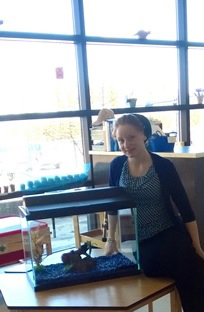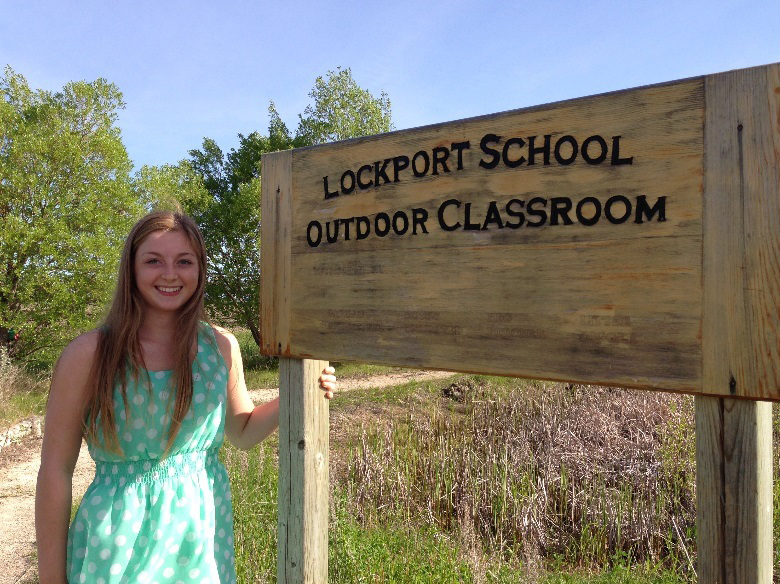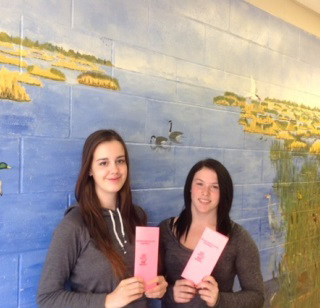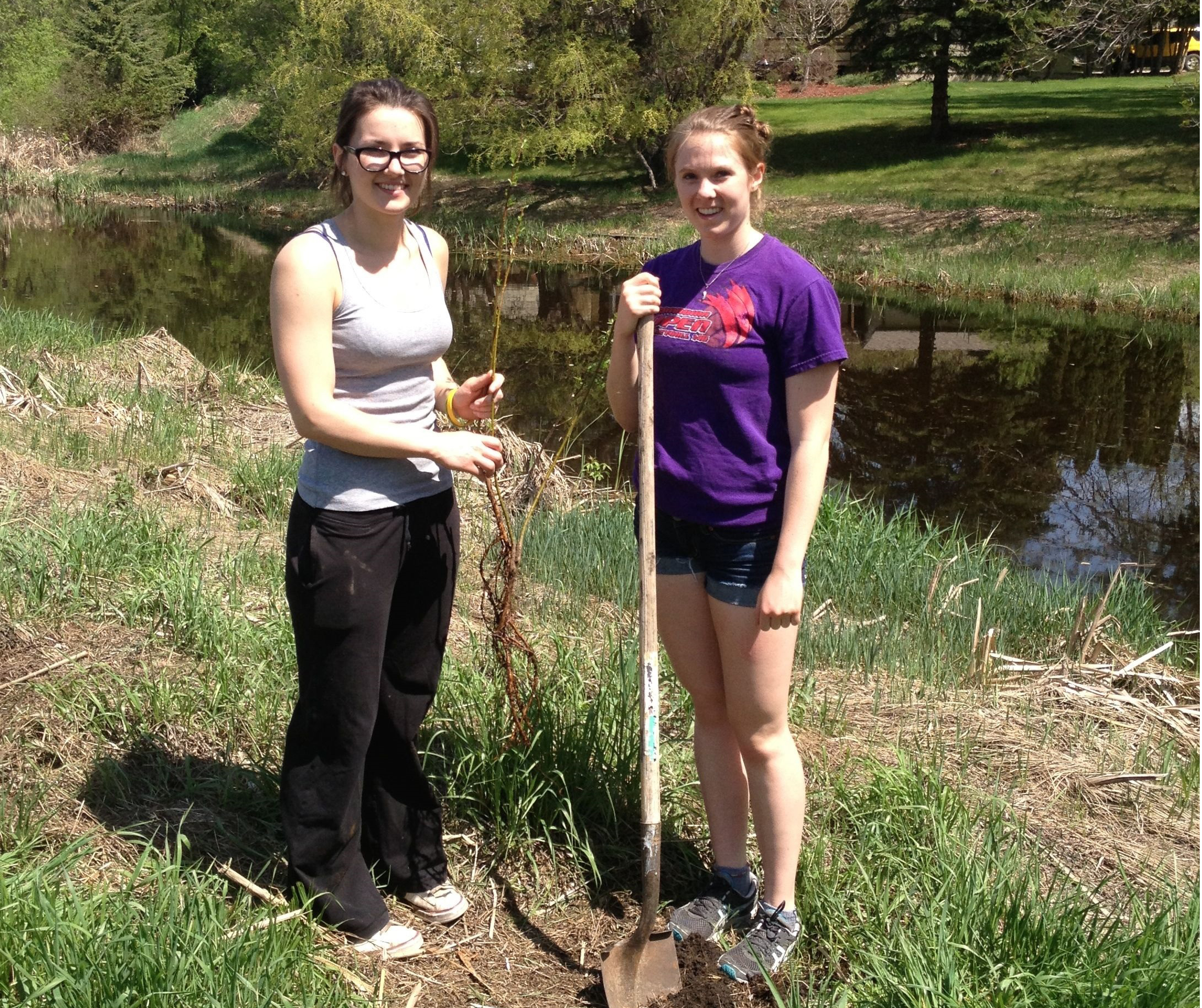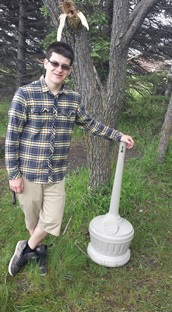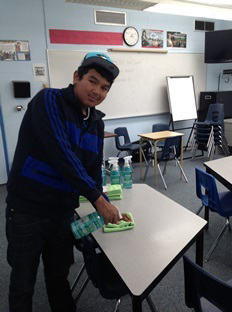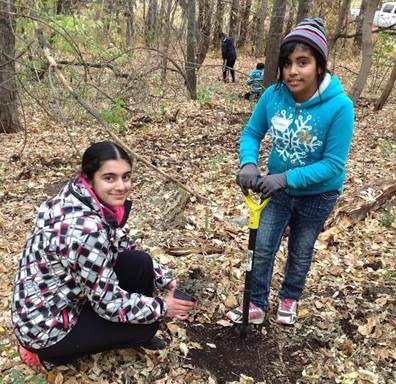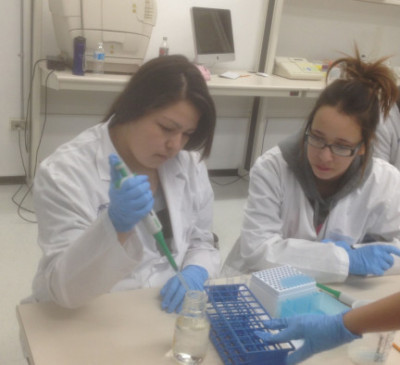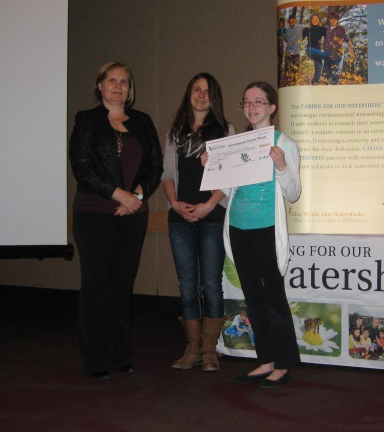2014 Saskatoon, Saskatchewan, Canada
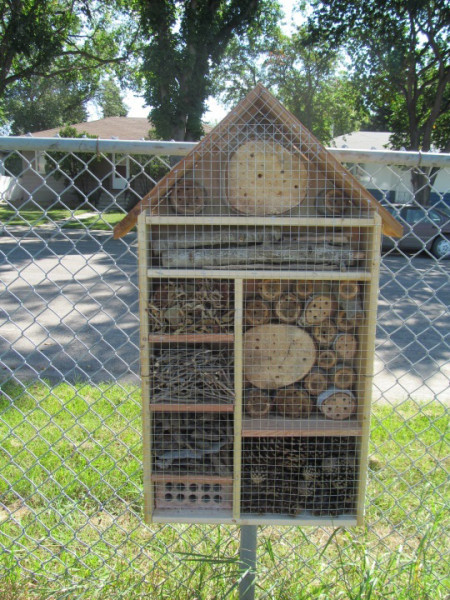
Alana Krug-McLeod from Aden Bowman Collegiate in Saskatoon, Saskatchewan, proposed the idea of improving the South Saskatchewan River Watershed through increasing insect biodiversity. Her proposal was to build three separate Insect Hotels in Saskatoon with educational signage and an associated website that explained the benefits of insect biodiversity and the importance of habitat provision like Insect Hotels for improving nearby aquatic ecosystems. Alana explained in her proposal that “…insect hotel typically consists of a solid structure or frame filled with organic and inorganic materials, a formation that serves to provide habitat for insects.” The types of material such as bricks, bamboo, drilled logs, bark affect what varieties of insects check-in at a given hotel.
Once built, insect hotels attract creatures such as lacewings, ladybugs, and mason bees. Alana explained at the Caring for our Watersheds final competition that these beneficial insects eat aphids and other destructive pests, pollinate plants so they can bear fruit or vegetables, and serve as decomposers of organic material. Alana felt that Insects Hotels could not only increase local biodiversity but also provide the opportunity for uniquely engaging her community to learn about insects and potentially inspire them to build their own Insect Hotels.
Alana worked with the community to build and install three separate insect hotels across Saskatoon; one in a private yard, one at the Varsity View Community Garden, and one at Aden Bowman’s joint school and community garden.
On August 26th, Alana met with members of the community garden to construct their insect hotel. People of all ages participated with volunteers ranging from a four year old to seniors. Together volunteers and members of the community garden built a beautiful structure, which a smaller group of volunteers was able to fill, seal, and mount the next morning.
On August 27th, Alana met with a group of students from Aden Bowman Collegiate to harvest and weed the raised garden beds and to install and fill the insect hotel. Everyone was energetically engaged, and the insect hotel was easily secured in a south facing location beside the raised garden beds. Two students agreed to be contacts for the Insect Hotels and to report on what types of insects take up residence and to monitor the longevity of the structure. After the Insect Hotel was installed some of the students talked about making insect hotels for themselves and as gifts for others.
The third insect hotel was built by Alana and her mom with materials remaining from the construction of the first Insect Hotels and donated materials. It was installed in her family’s front yard in the Varsity View neighbourhood, where it attracts the attention of passersbys who often stop to see or taste what is growing in the garden. Alana has expressed interest, capacity willing, to work with other interested groups in Saskatoon to build more Insect Hotels and continue to increase aquatic and insect biodiversity to improve her local watershed.
